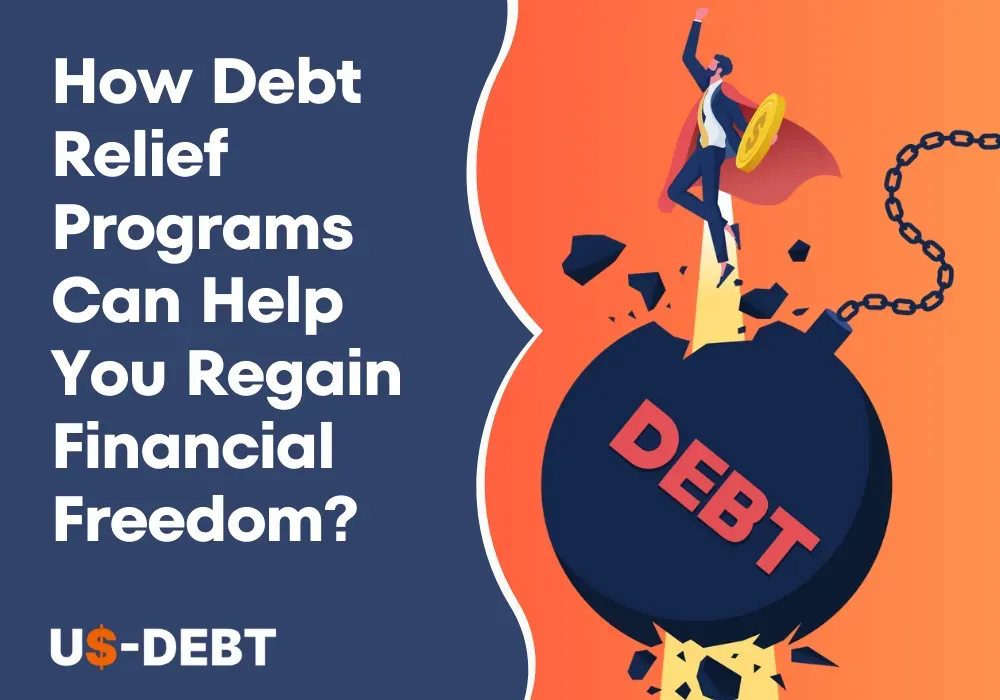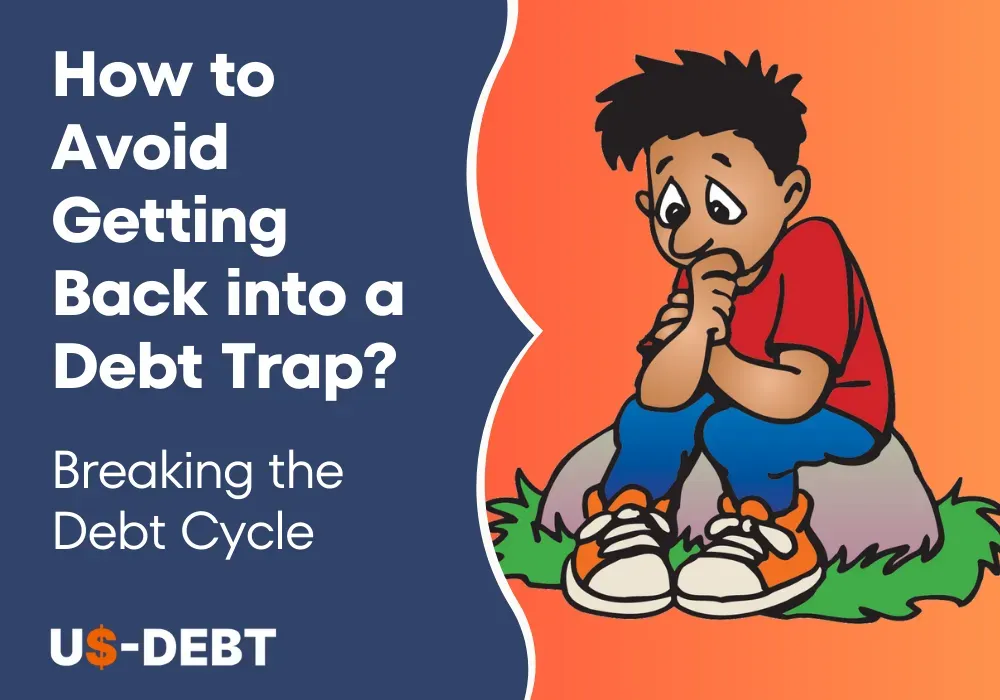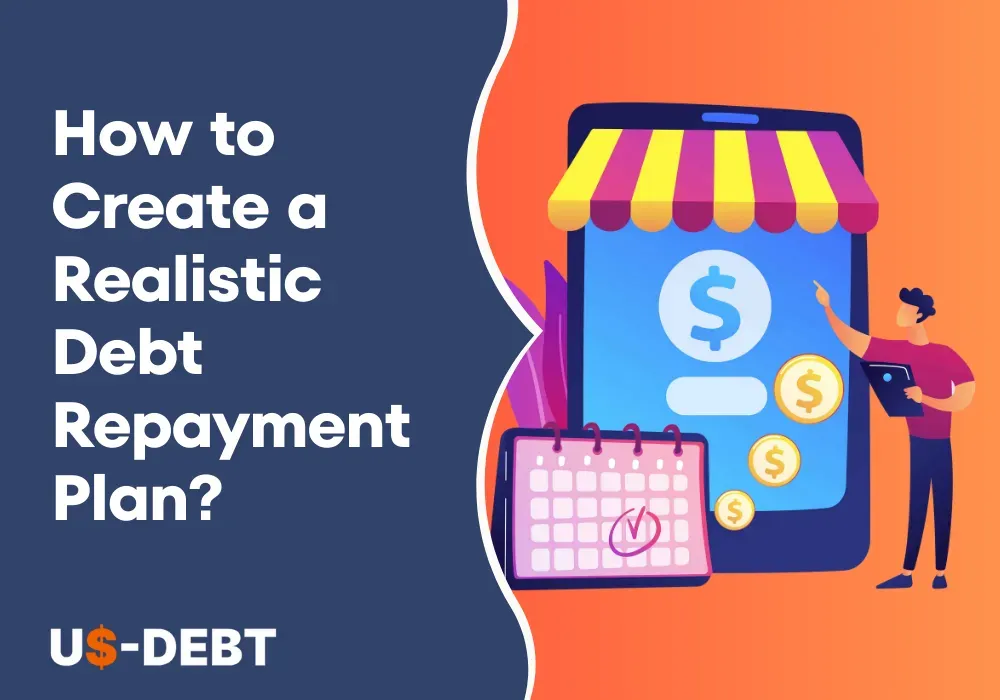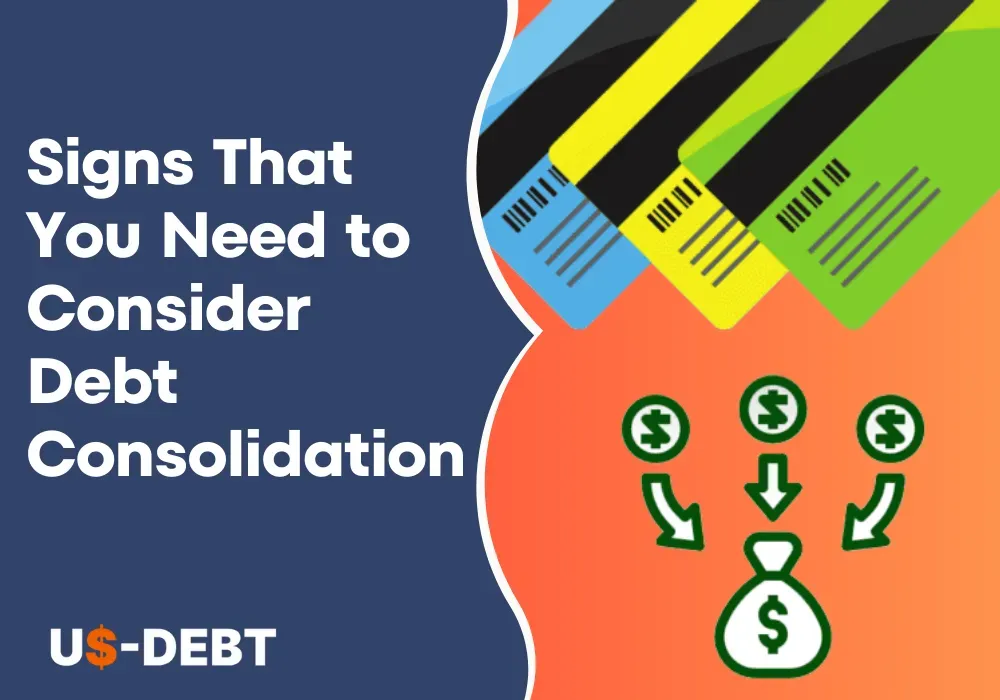Individuals and families that are stressed by debt, cannot achieve the financial independence they deserve. It might be complicated to always have to balance various bills and live paycheck to paycheck. However, there is hope. Debt relief programs offer effective solutions to help you regain control of your finances and pave the way to long-term financial freedom.
Â
Understanding Debt Relief Programs
Debt relief programs are specialized strategies and processes designed to assist individuals in resolving their debts and regaining control of their financial situations. These programs aim to provide effective solutions for managing and reducing debts, offering individuals a pathway toward achieving financial freedom. Debt relief programs are typically administered by professional companies that work with creditors on behalf of the debtor.
Â
Types of Debt Relief Programs Available In the United States
Â
Debt Consolidation: Debt consolidation involves combining multiple debts, such as credit card balances or loans, into a single, manageable payment. By consolidating debts, individuals can simplify their repayment process and potentially secure lower interest rates or reduced monthly payments.
Debt Settlement: Debt settlement programs aim to negotiate with creditors to reduce the overall debt amount owed. Professional negotiators respond on behalf of people who consent to a settlement agreement that enables debtors to pay a lower amount in a lump sum or through a pre-arranged payment schedule.
Debt Management Plans: Debt management plans (DMPs) involve enrolling in a program administered by credit counseling agencies. Under a DMP, individuals make monthly payments to the agency, which then distributes the funds to creditors on their behalf. These plans typically involve negotiating lower interest rates and consolidating debts into a single payment.
Bankruptcy: Bankruptcy is considered a last resort option for individuals facing overwhelming debt. It involves legal proceedings to eliminate or restructure debts, providing individuals with a fresh financial start. Specific rules and regulations apply to bankruptcy, which can have long-lasting consequences on credit ratings.
Â
Eligibility Criteria for Debt Relief Programs
Â
Minimum Debt Requirements: Debt relief programs typically require individuals to have a minimum amount of debt to qualify for enrollment. The specific threshold varies depending on the program and the provider.
Financial Hardship Proof: To be eligible for debt relief programs, individuals must demonstrate that they are facing financial hardship and are unable to meet their debt obligations. This may require providing documentation such as income statements, bank statements, or proof of unemployment.
Credit Score Considerations: While credit scores are not always a determining factor for eligibility, they can play a role in certain debt relief programs. Some programs may require individuals to have a certain credit score or consider the potential impact on credit scores during the debt relief process.
Â
Benefits of Debt Relief Programs
Debt relief programs offer individuals struggling with overwhelming debt a lifeline toward regaining financial stability and freedom. These programs provide several advantages that might lessen the weight of debt and aid people in achieving debt freedom. Let's explore the key benefits of debt relief programs:
Lowering Interest Rates and Monthly Payments: One of the primary advantages of debt relief programs is the potential to negotiate lower interest rates on existing debts. By working with creditors, debt relief professionals can secure reduced interest rates, resulting in lower monthly payments. This allows individuals to allocate more funds towards essential expenses or savings, easing their financial strain.
Reducing the Overall Debt Amount: Debt relief programs, such as debt settlement, offer the opportunity to reduce the total amount of debt owed. Through negotiations with creditors, debt relief professionals strive to reach agreements that allow individuals to settle their debts for less than the original balance. This reduction in debt amount can provide significant financial relief and shorten the time required to become debt-free.
Consolidating Multiple Debts into a Single Payment: Managing multiple debts can be overwhelming and confusing. Debt relief programs, like debt consolidation, enable individuals to merge multiple debts into a single, streamlined payment. This simplifies the repayment process and eliminates the hassle of keeping track of multiple due dates and amounts. It also reduces the likelihood of missing payments, helping individuals regain control over their finances.
Negotiating with Creditors on Behalf of the Debtor: Debt relief programs involve professional negotiators who work directly with creditors on behalf of individuals. These negotiators have the knowledge and expertise to communicate with creditors, handle collection calls, and negotiate more favorable repayment terms. This relieves individuals of the stress and burden of dealing with creditors directly and ensures that their best interests are represented during the negotiation process.
Providing a Structured Repayment Plan: Debt relief programs offer individuals a structured repayment plan that considers their financial capabilities and obligations. These plans are designed to be realistic and manageable, considering individuals' income, expenses, and debt obligations. The structured plan provides a clear roadmap toward debt repayment, enabling individuals to make consistent progress toward becoming debt-free.
Exploring the Potential Impact on Credit Scores: While debt relief programs may have a temporary impact on credit scores, they can ultimately help individuals improve their creditworthiness over time. By completing a debt relief program and adhering to the structured repayment plan, individuals can demonstrate responsible financial behavior. Over time, this can positively impact credit scores and open doors to future financial opportunities.
Â
Choosing the Right Debt Relief Program
Selecting the appropriate debt relief program is crucial for individuals seeking to regain control of their finances and achieve freedom from debt. With so many possibilities available it's critical to consider your financial situation and do extensive study before making a choice. Here are key steps to choosing the right debt relief program:
Â
Evaluating Personal Financial Situation
Â
Assessing Total Debt Amount: Begin by calculating the total amount of debt owed. This incorporates credit card balances, loans, medical bills, and any other outstanding debts. Understanding the magnitude of the debt will help determine which debt relief program is most suitable.
Determining the Ability to Make Monthly Payments: Consider your monthly income and expenses to gauge your ability to make consistent payments towards the debt. Assessing your financial capabilities will help you identify the debt relief program that aligns with your budget and ensures manageable monthly payments.
Understanding the Impact on Credit Scores: Different debt relief programs can have varying impacts on credit scores. Research and understand how each program may affect your creditworthiness. While some programs may have temporary negative effects, others can help you rebuild credit in the long run. Consider the long-term implications on your credit score when selecting a debt relief program.
Â
Researching Reputable Debt Relief Companies
Â
Reading Customer Reviews and Testimonials: Research and read reviews from other individuals who have utilized debt relief services. Customer reviews and testimonials provide insights into the experiences and outcomes of working with different debt relief companies. Look for companies with positive feedback and successful track records.
Checking Accreditation and Certifications: Verify if the debt relief company is accredited by reputable organizations such as the Better Business Bureau (BBB) or the American Fair Credit Council (AFCC). Accreditation indicates adherence to industry best practices and ethical standards.
Verifying Compliance with Relevant Laws and Regulations: Ensure that the debt relief company complies with applicable laws and regulations, such as the Federal Trade Commission's rules for debt relief services. Companies should be transparent in their operations, providing clear information about their services, fees, and potential risks involved.
By evaluating your financial situation and conducting thorough research, you can identify reputable debt relief companies that align with your needs. It is crucial to work with trustworthy professionals who have a proven track record of helping individuals achieve debt relief. Seek consultations and gather information from multiple sources to make an informed decision that will set you on the path to financial freedom.
Remember that everyone has a diverse financial condition, so what functions for one individual might not function for another. Consultation with a financial advisor or debt relief professional can provide personalized guidance and recommendations based on your specific circumstances.
Â
Debt Relief Process
The journey toward debt relief involves a systematic process that helps individuals regain control of their finances and achieve a debt-free future. Understanding the steps involved in the debt relief process can provide clarity and guidance. Here are the key stages of the debt relief process:
Â
Step #1 - Initial Consultation with a Debt Relief Professional
The process typically begins with an initial consultation with a debt relief professional or company. During this consultation, individuals discuss their financial situation, including the amount of debt owed and their monthly income. The debt relief professional assesses the individual's circumstances and advises on the most appropriate debt relief options.
Â
Step #2 - Financial Assessment and Evaluation
After the initial consultation, a thorough financial assessment takes place. This assessment includes analyzing the individual's income, expenses, and debt obligations. Gaining a thorough grasp of the person's financial situation is the aim of choosing the most effective debt reduction strategy.
Â
Step #3 - Development of a Customized Debt Relief Plan
Based on the financial assessment, a customized debt relief plan is developed. This plan considers the individual's unique circumstances, including their debt amount, income, and financial goals. The plan outlines the recommended debt relief strategy and provides a roadmap for achieving debt relief.
Â
Step #4 - Implementation of the Chosen Debt Relief Program
Once the debt relief plan is finalized and approved, the chosen debt relief program is implemented. This could involve various strategies such as debt consolidation, debt settlement, debt management plans, or even bankruptcy as a last resort. The debt relief professional or company takes charge of initiating the chosen program and working with creditors on behalf of the individual.
Â
Step #5 - Regular Progress Updates and Communication
Throughout the debt relief process, regular progress updates and communication are essential. The debt relief professional keeps the individual informed about the status of negotiations, payments, and any changes in the debt relief plan. Open communication ensures transparency and allows individuals to stay engaged and informed about their journey toward debt relief.
Â
Step #6 - Completion of the Debt Relief Program
The debt relief process culminates in the successful completion of the chosen debt relief program. This occurs when the individual has made all necessary payments, reached settlement agreements with creditors, or fulfilled the terms of the debt management plan. Completion of the program signifies that the individual has achieved debt relief and can move forward toward a debt-free future.
It is significant to note that depending on the person's financial status and the program selected, the length of the debt relief procedure might change. Regular cooperation and adherence to the debt relief plan are essential for a successful outcome. Seeking professional guidance and working with reputable debt relief professionals can greatly increase the chances of achieving effective and lasting debt relief.
Â
Additional Tips for Achieving Financial Freedom
Achieving financial freedom goes beyond just participating in a debt relief program. It requires adopting healthy financial habits and making smart decisions to secure long-term financial stability. Here are some additional tips to help you on your journey toward financial freedom:
Create a Budget and Stick to it: Develop a budget that outlines your monthly income and expenses. This promises to give you a clear picture of your financial status and assist you in allocating money properly. Stick to your budget by tracking your expenses and making adjustments as needed. Budgeting allows you to prioritize essential expenses, save money, and avoid unnecessary debt.
Build an Emergency Fund: Establishing an emergency fund is essential for handling unexpected expenses and financial setbacks. Aim to save three to six months' worth of living expenses in a separate account. Having an emergency fund provides a safety net and helps prevent reliance on credit cards or loans during challenging times.
Explore Additional Income Opportunities: Consider finding ways to increase your income by exploring additional income opportunities. This may entail operating a side business, freelancing, or taking up a part-time job. The extra income can be used to accelerate debt repayment, build savings, and enhance your overall financial situation.
Seek Financial Education and Guidance: Continuing to educate yourself about personal finance is crucial for long-term financial success. Read books, attend seminars, or take online courses to enhance financial knowledge. Additionally, consider seeking guidance from financial advisors or counselors who can provide personalized advice based on your specific goals and circumstances.
Practice Responsible Credit Card Usage: Credit cards can be useful financial tools if used responsibly. Avoid carrying high balances and strive to pay off your credit card balance in full each month to avoid interest charges. Use credit cards for necessary purchases and ensure you have a plan to repay the balance promptly. Responsible credit card usage helps build a positive credit history and minimizes the risk of falling into excessive debt.
Monitor Credit Reports Regularly: Regularly check your credit reports from major credit bureaus to detect any errors, discrepancies, or signs of identity theft. Monitoring your credit reports allows you to address issues promptly and maintain the accuracy of your credit history. You can obtain free credit reports from each bureau annually or consider subscribing to credit monitoring services for ongoing monitoring.
By implementing these additional tips, you can establish a solid foundation for achieving and maintaining financial freedom. It requires discipline, commitment, and continuous learning. Remember, financial freedom is a journey, and small steps taken consistently can lead to significant long-term results.
Â
Conclusion
Debt relief programs function as a lifeline for those who are drowning in debt by letting them reclaim their financial independence and pave the road for a better future. By leveraging all the benefits offered by these programs and placing extra financial techniques into action, you may get rid of your debts and enjoy the peace of mind that is associated with being in charge of your financial situation. Never be afraid to ask for guidance from professionals or to make the necessary preparations for a future free of debt.
Â
Continue Learning:Â US National Debt: A Guide to Understand America's Financial Burden



